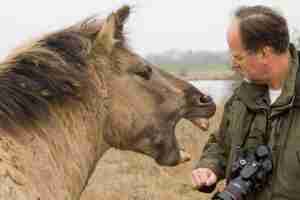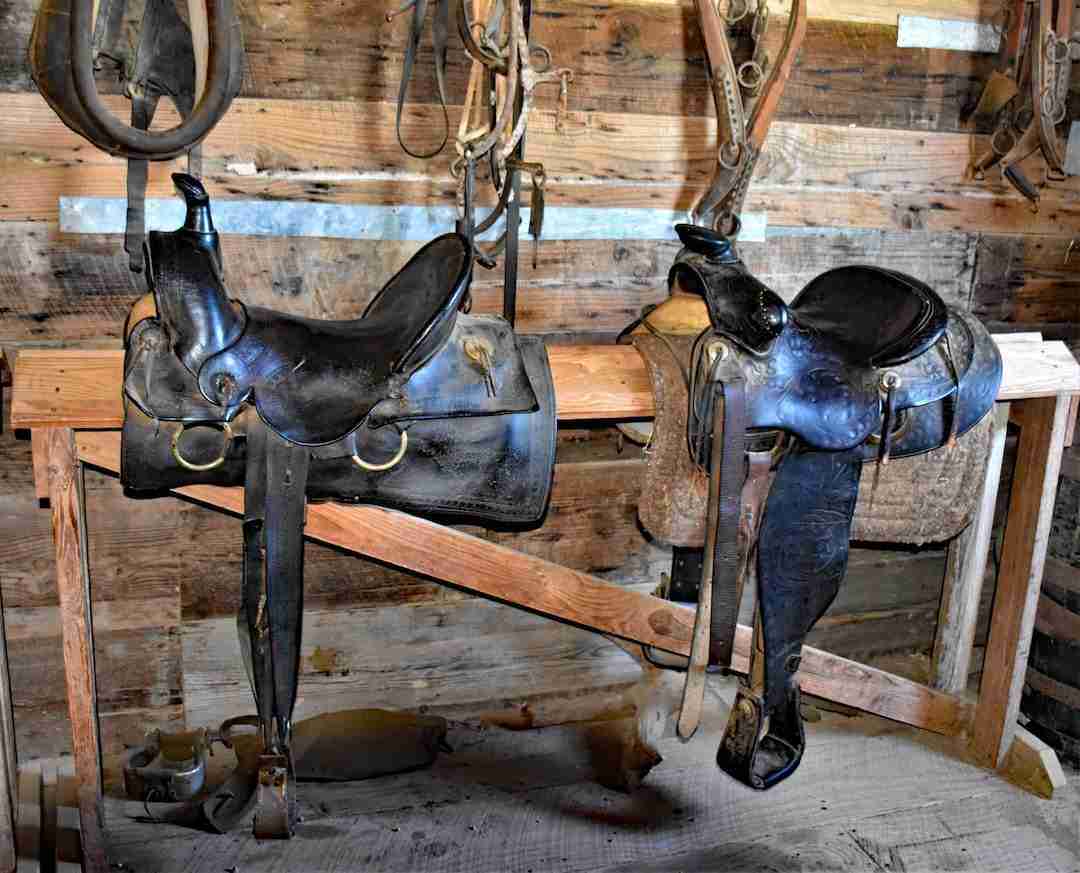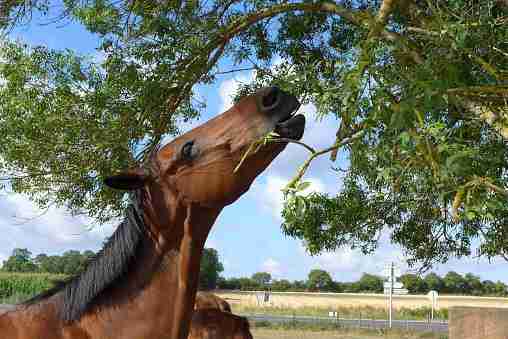If you work with horses, you’ve probably had a “gentle” reminder of how powerful these animals are, but have you ever wondered how hard a horse kicks? Below we’ll investigate these incredible animals and the power of their kicks, bites, and other characteristics.
A horse kick with a force of roughly 10000 Newtons, enough to shatter ribs and kill the recipient. The strength of a horse’s kick is the sum of several factors, including the size of the horse, its age, breed, temperament, physical conditioning, and the situation the horse is in.
Horses are the epitome of power, and humans rely on their strength for many tasks. Although they are naturally strong, several factors influence a horse’s power. But why do horses kick and bite so hard, and how much weight can they carry and pull?
The Strength Of A Horse: Kick, Bite, And Other Capabilities
Horses excel in many physical aspects. They gallop at high speeds, carry heavy loads, pull tremendous weights, and deliver powerful, accurate kicks.
A horse’s amazing capabilities are directly related to its survival.
- Powerful legs to run away from predators.
- Accurate, hard kicks for defending themselves.
- Strong jaws to chew through tough grass.
- The physical strength to traverse the roughest of terrains.
Humans saw the potential in horses, domesticated them, and selectively bred specific traits into the various horse types.
All You Need To Know About How Hard A Horse Kicks
The average strength of a horse’s kick is 10000 Newtons (force), which equates to roughly 2248 pounds of force (lb.-f), or 2000 psi.
It takes roughly 4000 Newtons (N) to break the human femur (the hardest bone in the human body).
Humans, by comparison, have an average kick force of roughly 1000 lb.-f (some martial artists reach 2000 lb-f).
Several factors influence the strength of a horse’s kick, including:
The Horse Breed
Once humans domesticated the horse, they began “tailor-breeding” them for various purposes. This selective breeding led to the various shapes and sizes we know today.
- Draft horses are large, powerful, working machines usually docile/placid. However, their kicks are no less powerful than competition horses, like Thoroughbreds, Quarter horses, or Arabians.
- Ponies, however, are smaller, and miniature horses are the size of a large dog. While these horses kick, they are often less potent than the larger breeds.
The various breeds are renowned for their varying temperaments. While draft horses take a while to wind up, thoroughbreds are often highly strung and quick to “lash-out.”
The Age, Size, And Weight Of The Horse
A horse’s age influences the strength of its kick. Younger horses are still developing their muscle mass, while aged horses begin to lose condition. Subadult and adult horses are the most likely to deliver powerful kicks.
Related to age and breed is the size of the horse. A larger horse can exert more force than a smaller horse, as they have greater muscle mass powering the leg (adding more weight to the limb). Researchers suggest that a horse’s weight is directly proportional to the amount of force it exerts during a kick.
More muscle mass results in greater acceleration and more weight, which (according to Newton) equals more force.
The Physical Health/Condition Of The Horse
A healthy, sound horse will deliver a stronger blow than an injured horse.
Likewise, an active horse who constantly uses its leg muscles should be stronger than a horse that stands in a field (or stable) grazing all day.
A mature, healthy horse of a larger breed will exert more force (kick harder) than a smaller, older, or injured/sick horse.
External Circumstances Surrounding The Kick
While the horse’s physical characteristics are important in determining how hard the horse kicks, other external factors at work usually influence the power behind the blow.
These factors include:
- Is the horse shod? Although the force remains the same, a horseshoe increases the risk of fractures making the kick feel significantly harder.
- The angle and the horse’s leverage. Where is the target compared to the horse, i.e., does the horse need to stretch out of its comfortable range? Does the horse have enough room to achieve the greatest momentum with its kick?
- The purpose behind the kick. Was the horse showing aggression, startled, defensive, playful, etc.?
Why Does A Horse Kick So Hard?
Horses are prey animals. Their primary defense against predators is running away. To escape a hungry carnivore, you need powerful leg muscles, and when they get too close, those muscles drive hard hooves into the attacker.
A horse learns that a deft kick is ideal for putting distance between itself and something it does not want around.
When Would A Horse Kick Hard?
Horses kick for several reasons, including:
- Playful banter (with other horses).
- At predators/attackers.
- At other horses and people not respecting their space.
- When they are in pain or fear, including external and internal pain (e.g., a colicing horse may kick at its belly).
- At annoying biting insects.
While horses kick frequently, most kicks are not hard unless the horse feels duly threatened (their food, herd, or foal). Unfortunately, some horses might kick when startled by a person or animal they were not expecting.
Horse kicks are some of the most common injuries (up to 11% of injuries) riders and those working with horses experience (after falling to the ground). Many of these kicks occur during grooming and are aimed at the face.
While the number of fatalities from horse kicks is relatively low, there are several horse-related fatalities every year.
How Hard Is A Horse’s Bite?
While a horse’s bite force is not the first thing you think about when discussing a horse’s power, they have a pretty impressive bite too.
The average force for a horse’s bite is between 5350 and 6350 N. However, most sources rate a horse bite at around 500 psi.
The table compares a horse bite to several other animal bite forces.
| Animal | Bite force |
| Crocodile | 16 460 N |
| Hippopotamus | 8 100 N |
| Horse | 5350–6350 N |
| Lion | 4 450 N |
| Human | 890 – 1300 N |
Why Do Horses Need A Strong Bite?
Although horses are herbivores and don’t need to subdue and kill prey with their teeth, a strong bite force is essential for eating tough, dry grass.
Horses move throughout the day. As they feed, they take a bite and move on. If they can’t bite a chunk of grass in one motion, they take too long to move on to the next area.
Aside from feeding, a horse bites to protect itself/deter other horses. A horse’s mouth is ideal for defense. Their long necks and thin faces allow a horse to nip assailants before they get in too close.
Could A Horse Bite Off A Human Finger?
Although severe horse bites on humans are rare (about 3 to 4.5% of reported cases), there are terrible consequences when they decide to bite.
A 2019 case study followed the incident of a 23-year-old whose finger was bitten by his horse.
While the bite did not cleanly sever the finger from the hand, it significantly damaged it enough that doctors decided to amputate the finger (it crushed bone, torn flesh, tendons, and ligaments).
How Much Weight Can A Horse Carry?
Regarding load bearing, horses can carry roughly 20% of their body weight. The average load, a horse, can carry is between 300 and 400 pounds.
Factors Which Influence A Horse’s Carrying Weight
Although 20% is a good starting point, several factors influence how much a horse can carry, including:
The Horse’s Conformation
The genetic makeup of a horse is fundamental to its weight-bearing capacity. Horses with greater cannon bone thickness/circumferences and wider loins can support more weight than horses with smaller features.
Horses with short, muscular backs and bigger cannon bones are better weight carriers.
The Breed Of Horse
The type of horse is significant. Researchers discovered that Arabian horses could carry up to 30% of their body weight while performing endurance racing.
Researchers discovered that Icelandic horses remained sound for up to 23% of their body weight during continuous exercise.
Large-breed horses can (theoretically) carry heavier loads.
The Horse’s Fitness Level
Like people, horses that exercise/work can carry more weight comfortably.
How “Sound” (Injuries) The Horse Is
If a horse is healthy, it can carry 20% or more of its body weight. If the horse is injured, it won’t be able to carry as much.
Muscles, bones (and joints), and feet are important regions for a horse to be fully operational.
The Particular Activity And The Equipment Used
What the horse carries, how long it carries, the terrain and the saddle/carrying equipment can hinder or promote carrying weight.
A well-balanced load, fixed to a surface that distributes weight evenly, allows a horse to better carry a load.
How Much Weight Can A Horse Pull?
The breed, size, fitness, type of activity, terrain, and health of the horse are fundamental in determining the total weight it can pull.
A horse can pull a load of 1/10 its body weight as a dead weight (e.g., plowing or logging).
However, slap some wheels onto the load, and your horse could theoretically pull up to 1 ½ times its body weight.
For example, a 2000-pound horse could comfortably pull a load of logs that weighed 200 pounds. However, if you put that load on a wagon (added wheels), the same horse could pull up to 3000 pounds.
A Horse Breed Set Apart For Pulling
The draft horse shines supreme in this category of strengths.
Humans developed draft horses around the 18th Century to help with farm work, logging, and other activities. There are various breeds of these powerful horses, including:
- Brabant/Belgians
- Clydesdales
- Percherons
- Shires
- Suffolk Punch
Originally bred from the “Great horse” (war horses), these draft horses maintained the powerful form their predecessors used to carry armored knights into battle. Of the various drafts, the Belgian is considered the strongest.
However, in 1924, a shire pulled a load of 58 000 pounds. The largest shires weigh up to 2000 pounds; therefore, this horse pulled 29 times its body weight (but over a short distance).
Other Impressive Horse Strengths
A horse’s strength is a product of powerful muscles, large lungs, and a strong heart. While these attributes once helped horses dominate the plains and flee from predators, humans capitalized on their potential to make “beasts of burden.”
If their impressive kicking, biting, carrying, and pulling strengths were not enough, horses have other incredible attributes that won them a special place in human history, including:
Horses Have Incredible Endurance
While not all horse breeds are endurance runners, the Arabians shine supreme in this category. Competing in “Endurance” competitions, Arabs traverse incredible distances while racing.
However, many argue that humans are better endurance performers than horses. We can cool ourselves off better (through sweating) than horses, allowing us to run further (provided we have the fitness).
Horses Have Spectacular Speed
Although humans compare in endurance, horses have us beat in the speed department.
A horse’s average speed is roughly 25 to 30 mph (thoroughbreds 40 to 45 mph). Some quarter horses reach 50 mph, but not over long distances.
Conclusion
Horses are incredible animals, powerfully built by nature and tweaked by humans to peak performance. A horse can kick at roughly 2000 psi, and their bites can crush bone. While horses carry only 20% of their body weight, they can pull up to 20 times their weight, depending on the breed and distance.
Resources
https://www.livescience.com/6040-brute-force-humans-punch.html
https://casereports.bmj.com/content/2012/bcr-2012-006657.short
https://www.thesprucepets.com/why-do-horses-kick-1887278
https://ohioline.osu.edu/factsheet/19
https://pubmed.ncbi.nlm.nih.gov/18766046/
https://thehorse.com/136518/scientists-study-how-hard-horses-kick/













